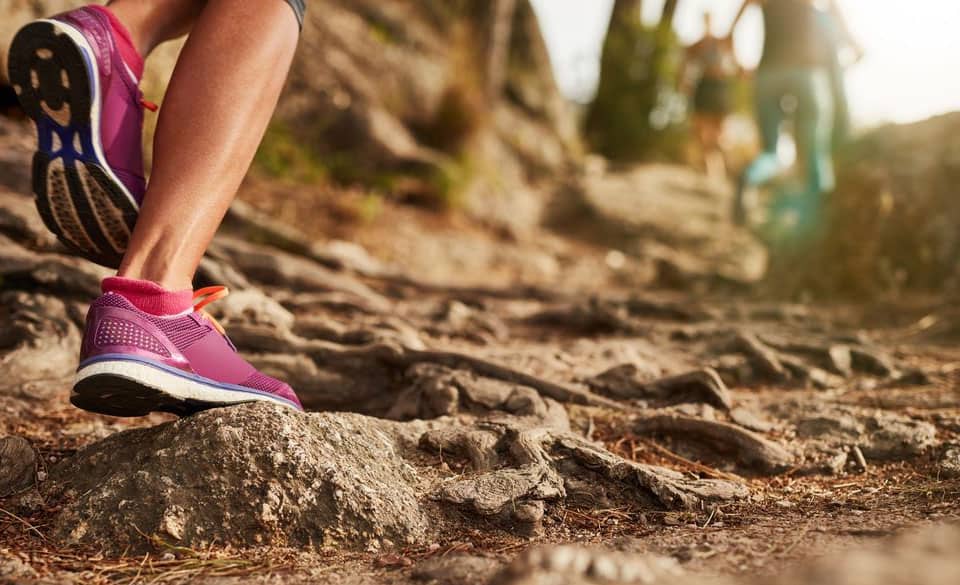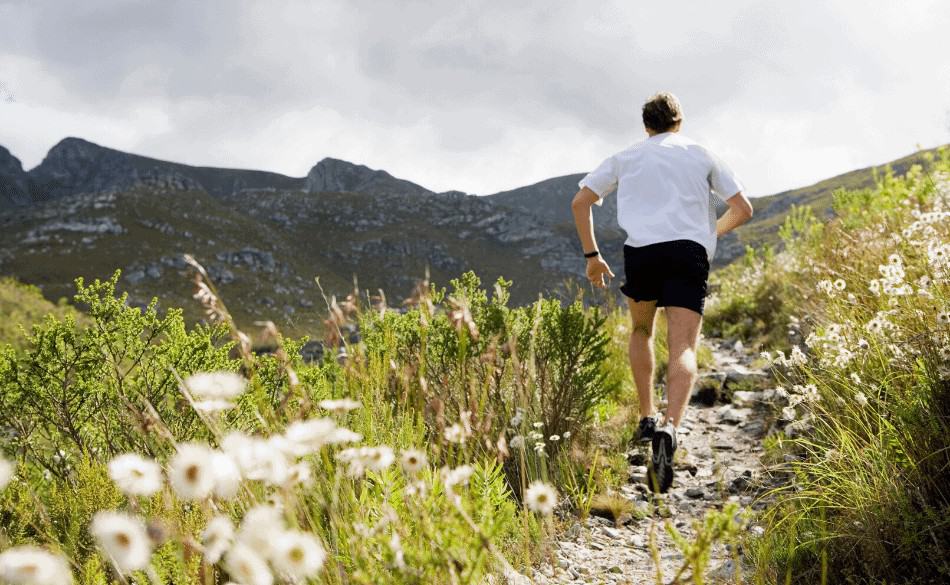
Trail Running For Beginners – 2021 – Guide To Off Road Run Technique
Page Contents
Trail runners often share common traits, and this includes a desire for adventure and challenge that trail running provides. Most runners that try trail running are hooked almost immediately. Why? Because trail running is an activity that can be run on any trail.
Trail runners often come in many fitness levels and shapes and sizes. While you don’t need to be a dedicated runner, many of those that start have never run a step before starting trail running.
Finding The Best Trails For Running
For the aspiring trail runner, living in the mountains is not required. Many urban areas provide trails that provide both underlying terrains for newbies and more technically challenging terrain for the experienced.
Finding trails to run requires little to no effort; a simple search online can provide you with available trail runs in your area.
If you are looking for some challenging runs, try searching via google maps, which allows you to explore a little more. Finding new trails can be an adventurous option, but remember to stay clear from private land and golf courses.
Start Trail Running – What Should You Know?
If you are new to running, remember to complete a physical with your doctor to determine if they are any outlining problem. If your current fitness is limited to walking or you have no background in the running, start with walking and running before you hit the trails.
Experienced trail runners focus on using minutes or hours to track training rather than distance. The terrain and speed are much slower than road running meaning you won’t cover the range you usually do.
Running can present a challenge in itself. Stay clear of hills until you are comfortable with the uneven footing and your aerobic ability has improved. Trail running works different muscles than road running. It can add more stress during ascents and descents than running on the pavement. So hold back from putting tremendous strain on the untrained muscles.
Once your fitness, lower leg strength, and competence with flat trails has improved, start to add technical trails and hills to your training.

Best Trail Running Workouts For Beginners
There are numerous methods to add hills to your training. The first method of hill training requires a significant grade (using a steep dirt road can offer the best footing for this). Run for 1-2 minutes and then focus on walking for a minute. Similar to a fartlek run, we focus on this for 15-20 minutes.
Depending on your fitness level, the two-minute intervals maybe ran close to your threshold while the recovery minute is recovery running. But after all, we are talking about the beginner runner looking to start trail running, so this session is more biased towards them.
The second method of hill training requires you to pick a more gradual slope with less stable footing. Focusing on a longer interval now will allow you to practice trail skills without the steep gradient.
Focus on climbs that are longer than 15 minutes of climbing. Remember to pace yourself and keep your heart rate close to the threshold heart rate. If you are beginner, this should feel uncomfortable but will still leave some room for you to push harder if needed.
Once you have been training trails for some months, try to combine both of these training sessions. Find a course that includes a trail that has climbs longer than 5 minutes and work harder on the climbs and try to recover during the descents.
If your a beginner trail runner and find the hills overly complicated, remember walking can some times be more efficient than running. Don’t get caught up with the theory of walking is wrong. Knowing when to walk and run is an asset you will develop as your trail running experience increases.
If you don’t live close to any hills, you can do these hill workouts at a stadium or any more extended set of stairs. Alternatively, some gyms have a stair machine, and if you run out of options, this is a great alternative.

Tips For Trail Running
Running uphill puts a lot of strain on the calf’s quadriceps and lower back. Remember to stretch after hilly workouts and implement ice baths or massage regularly into your training. Always allow the heart rate to recover between hill repeats.
Over time you will see a quicker decline in your heart rate as you get fitter. You can then start to increase the intensity or duration of the intervals. But remember we are training the technique and fitness of a beginner trail runner, so the speed is not the sole outcome.
Even though gravity helps you when running downhill, there is the correct technique for beginners to learn.
Try to avoid leaning back when trying to slow down. The same can be said for speeding up (leaning forward). Try to center your body weight over the knees while maintaining a relaxed pose.
During sharp turns or steep drops, focus on lifting your shoulders and arms to help maintain balance. It can also help you to increase shock absorption.
Downhill running technique takes some time to master, especially on technical trails. To improve your downhill running technique, start by focusing on gradual hills before progressing to technical ones.


Download Running the Mile for only 8usd
“A Know-all Short Report All About Long Distance Running”



